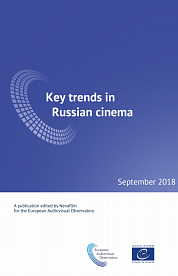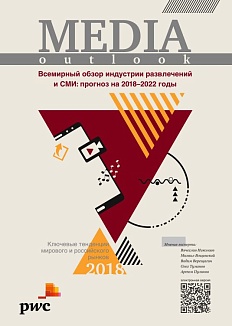Despite a reduction in releases in 2017, the number of films produced in Russia has been on the rise in recent years, at around 140150 films each year. At the same time, increasingly few films are receiving state support: while more than 70 such projects received public funding in 20152016, only 52 did in 2017. On the other hand, in 2017, twice as many films as usual (20 as opposed to ten) were shot with the involvement of TV channels. This is a very significant source of investment for producers.
The digital revolution paved the way for more films to make it to the big screen, with the number of films increasing from 280350 in 20042011 to 400450. The same can be said for event cinema: by 2016, a distribution system for event cinema had emerged and begun to enjoy considerable success (a total of 550600 such films were screened as part of more than 200 programmes.) However, 2018 saw the adoption of the law on film festivals, which constitutes a serious threat to the continued existence of these types of public screenings, as it narrows the range of films that can be shown without a distribution license (and the conditions for obtaining such a license cannot always be satisfied in the case of creative content or retrospective releases).
.png)
In summarizing the results of the study, the authors have identified ten key trends that are influencing and shaping the medium-term outlook for the Russian film industry:
- The current difficult economic situation in Russia is reducing the incomes of professionals in all branches of the industry and increasing expenditure on the foreign technologies and equipment on which the industry depends.
- In Russia, federal executive bodies have assumed a more prominent role in regulating the film market and the activities of market players, which is having an impact (both positive and negative) on all sub-sectors of the film industry.
- The Russian cinema network has continued to expand thanks to financial support from the federal budget, which is having a positive effect on distribution and the production of domestic films. It is also having a positive effect on cinema exhibition, although this effect is more ambiguous: the number of cinemas may have increased, but competition is also increasing, and the fate of subsidized screens is uncertain.
- State financial support for film production is concentrated on an increasingly small number of big-budget films produced by leading studios. This means that the market share of Russian films is more and more dependent on the box-office returns of a small number of players and projects.
- There are more sources of income and investment for producers: partnerships with TV channels, crowdfunding, foreign sales (which are especially important given the weakness of the rouble), the development of video-on-demand services, TV channels dedicated to specific topics, etc.
The economy is therefore the most important factor impacting the film industry. The second most important factors are political and social, with the effect of technology on the Russian film industry in third place. The most important conclusion of this study for Russian film producers is that they must pay particular attention to the social changes that are taking place. Distributors would be advised to focus on minimizing economic and legislative risks, but it is Russian cinemas that are facing the most problems, since they must overcome technological and social challenges as well as economic and legislative issues.



